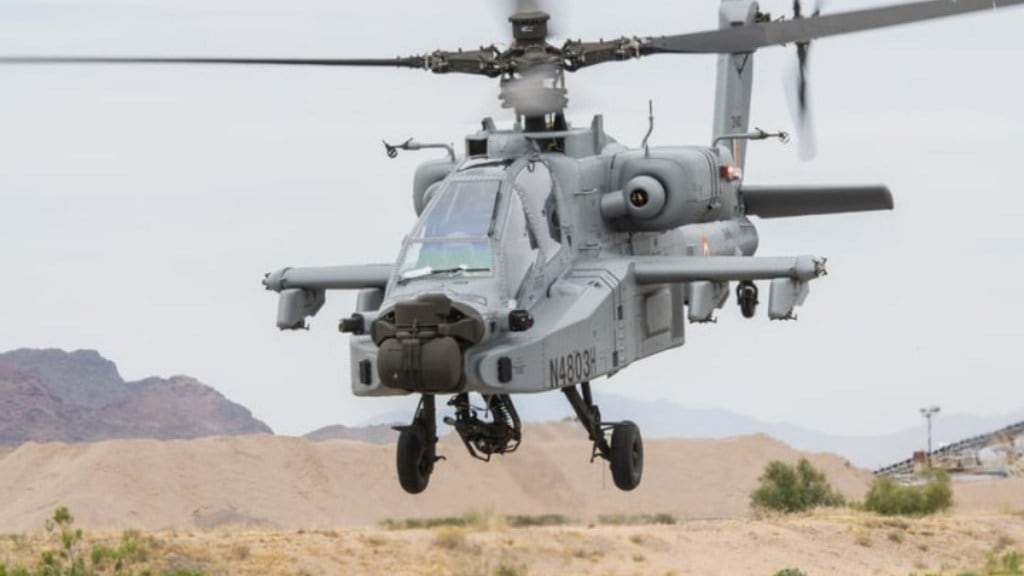After more than six months of delay, the Indian Army is finally set to receive its first batch of three AH-64E Apache attack helicopters in December. Originally scheduled for delivery in May and July, the delay was attributed to manufacturing setbacks caused by supply chain issues, according to a defence source. Despite these challenges, Boeing has now confirmed the delivery schedule, with three helicopters arriving in December and another three expected in the months following.
The procurement of the Apache helicopters marks a significant milestone for the Army’s aviation capabilities. Priced at approximately $800 million, the acquisition of these six helicopters, signed in February 2020, forms part of the Army’s ongoing effort to modernize its aerial attack fleet. As part of this deal, Boeing provided training for six pilots and 24 technicians from the Indian Army in the US., ensuring readiness for the new equipment. The Apaches are expected to be deployed in desert regions where their combat abilities, particularly in countering armoured threats, will be maximized.
In preparation for the Apache induction, the Army raised the 451 Aviation Squadron at Jodhpur in March 2023, which will operate these helicopters. These will be the second attack helicopters in the Army’s inventory, following the indigenous Light Combat Helicopter (LCH) developed by Hindustan Aeronautics Ltd. (HAL). The Army plans to use the LCH primarily in high-altitude areas like Ladakh, where it is specifically designed to perform better than the Apaches, which face operational limitations at high altitudes.
The delay in Apache delivery was also addressed at the political level. When Defence Minister Rajnath was in the US recently, he had raised the issue of the delay in the delivery of these helicopters with the US authorities.
The Army has been advocating for the procurement of additional Apaches, with discussions ongoing about acquiring 11 more units. In 2022, the Chief of Defence Staff (CDS) ordered a study to assess the overall need for armoured helicopters across India’s armed services, which endorsed the requirement for 39 attack helicopters, including the Apache.
The Indian government’s broader strategy for enhancing its attack helicopter fleet involves not just foreign acquisitions but also ramping up the indigenous production of the LCH.
As reported previously, approval has been given by the Defence Acquisition Council (DAC) for the purchase of 156 LCH units for the Army and Air Force. This is in addition to the 15 units currently being procured under limited series production. The Army’s growing helicopter fleet also includes 75 Rudra helicopters, the armed version of HAL’s Advanced Light Helicopter (ALH).
While the Apaches offer formidable firepower, their deployment will complement rather than replace indigenous platforms like the LCH. Together, these helicopters will enhance the Army’s aerial warfare capabilities across varied terrains, from the deserts to the high-altitude zones, ensuring robust operational readiness for future conflicts.
As the Army prepares to welcome its new Apache helicopters, the ongoing modernization efforts underline India’s focus on strengthening its defence capabilities with both foreign technology and domestic innovation. This balanced approach will likely provide the Army with the tactical flexibility needed in a complex and evolving security environment.

